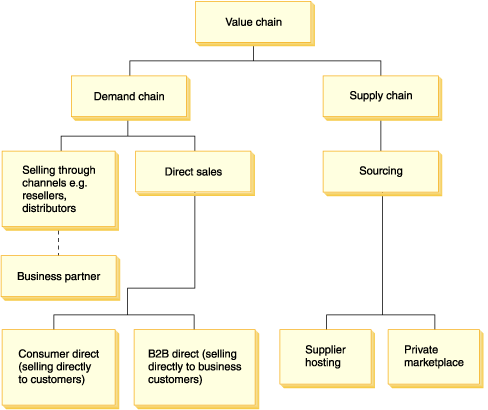Value chain business models
Value chain selling is supported through two business models: demand chain and a supply chain; WebSphere Commerce supports the transactions through, and relationship management of both the demand chain business model and supply chain business model. These models support transactions involving multiple enterprises or parties. Products, goods, services, or information are delivered through the parties of the value chain from producers to end users. A value chain also has relationship and administrative aspects, that is, you can manage the relationship of the partners or enterprises in your value chain, as well as offer some administrative services to those parties.
As a result, value chain business models must manage the two sides of their businesses: their customers and direct sales, and their channel partners and suppliers. Each requires its own management channels and practices.
To sell directly to customers (direct sales), value chain models usually include a storefront, where customers can purchase their goods or services directly.
To manage relationships with partners or suppliers, the demand chain and a supply chain models within the value chain include a hub. Under these models, value chain administrators can administer the operational aspects of the value chain in the hub, including enabling partners or suppliers to participate in the value chain by registering them, setting them up, and conducting various operations. Partners and suppliers can also access the hub to complete administrative tasks such as registering users.
The following diagram provides an overview of the partners and relationships that can be supported in value chain models.

Related concepts